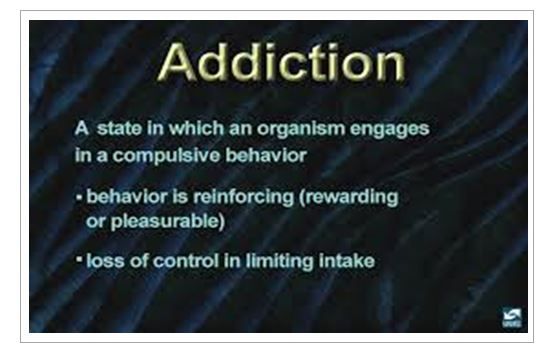Alcohol and cocaine abuse has a history dating several centuries. The origin of cocaine can be traced to 5000 BC in the Inca Empire in Peru, where the first uses of coca were discovered (Hart & Ksir, 2018). Today, coca leaves are still consumed in the same way as in ancient times – chewing coca leaves. Cocaine had early psychiatric uses until it became one of the most abused drugs in the Americas. Similarly, alcohol use has a history dating several centuries, estimated between 30 and 100 centuries (Hirst, 2019). The earliest evidence of alcohol production is from 7000 BCE in China (Hirst, 2019). The substance has even been used as a trade good and ritual substance traded across cultures.
Mechanism of Action
Cocaine’s mechanism of action comprises a blockage of dopamine receptors. Alternatively, it can work by destroying dopamine-containing neurons (Hart & Ksir, 2018). Alcohol’s mechanism of action is similar to a generic anesthetic since it suppresses the central nervous system (CNS). According to Hart and Ksir (2018), the exact CNS mechanism remains unknown, but alcohol critically acts on all neural membranes. The substance alters the CNS electrical excitability and produces other effects on dopamine, acetylcholine, and serotonin.
Alcohol and Cocaine Abuse

Effects on Behavior
The behavioral effects of alcohol are felt at the lowest effective blood levels, where abstract, complex, and poorly learned behaviors are disrupted. Increasing the alcohol dose impacts better-learned and simpler behaviors. The substance can cause increased activity, but scientists refuse to regard alcohol as a stimulant. Other behavioral implications include euphoria, reduced feelings of anxiety, happy feelings, and changes in performance (Hart & Ksir, 2018). Cocaine produces almost similar behavioral effects due to its impact on dopamine, which affects movement, pleasure, thoughts, and motivation. The behavioral effects include euphoria, increased alertness, talkativeness, increased energy, and reduced need to sleep or eat (Miller, 2022). Long-term effects may include slowed movements, paranoia, irritability, depression and anxiety, increased appetite, and difficulties in feeling pleasure.
Treatment Strategies for Cocaine
- Pharmacological approaches targeting dopamine receptors. This includes medications marketed for other diseases and additions. For instance, disulfiram, which is used to treat alcoholism.
- Behavioral interventions – includes therapy and contingency management.
- Mental health counseling
- Support groups
- Relapse prevention education
- Cognitive behavioral therapy
Treatment Strategies for Alcohol
- Detox and withdrawal
- Oral medications
- Continued support
- Treatment for psychological problems
- Treating health conditions
- Psychological counseling
Impact on Individual, Family, Society
Individuals busing alcohol expose themselves to risks of injuries and accidents. Other adverse individual outcomes include medical and psychological problems primarily associated with excessive consumption of alcohol. At the family level, alcohol causes damaged family relationships, domestic violence and abuse, and drained finances. Societies suffer from the costs of treating alcohol-related problems and experience such detriments are increased crime rates. Cocaine causes several issues for the individual, including mental problems, health risks, and chronic illnesses. Cocaine also affects the family, including the treatment burden, lost trust, risks to children, financial problems, and emotional and physical abuse. At the societal level, cocaine addiction costs American taxpayers billions in health care, crime, and work productivity.
Busting Myths about Alcohol
- Myth: You can consume one drink per hour and still be sober to drive.
- Fact: The human body needs more than an hour to clear alcohol. Additionally, piling drinks on top of one another leaves an individual quite intoxicated.
Prevention
Drug abuse prevention for alcohol and cocaine requires the development of the necessary programs targeting the individual, family, and society. The programs are designed to help identify the risk factors for drug abuse. The factors include having a drug-addicted family member, low socioeconomic status, low parental interventions, victims of abuse, thrill-seeking behaviors, and behavioral problems. School-based and community-based prevention programs are examples of initiatives that educate the public on the effects of drug abuse. The programs also identify and mitigate risk factors, including awareness creation.
Busting Myths about Cocaine
- Myth: Cocaine addiction takes time to develop.
- Fact: Cocaine addiction develops very quickly since repeated use leads to tolerance fast. It only takes a day of frequent use to develop cocaine addiction.
Policies/Laws
Current policies and laws comprise those under substance abuse and mental health services (SAMSHA). Therefore, there is a lack of specific policies and laws for each substance since drug abuse and substance addiction is approached as a larger social problem requiring standard laws and policies. Some of the laws and policies based on SAMSHA include:
- SUPPORT Act
- 21st Century Cures Act
- Comprehensive Addiction and Recovery Act (CARA)
- Tribal Law and Order Act
- Opioid Drug Treatment
- Federal Workplace Drug Testing
References
Hart, C., & Ksir, C. (2018). Drugs, society & human behavior. McGraw-Hill.
Hirst, K. (2019). History of alcohol: A timeline. ThoughtCo. Web.
Miller, L. (2022). Effects of cocaine: Short-term and long-term effects. Drugabuse.com. Web.